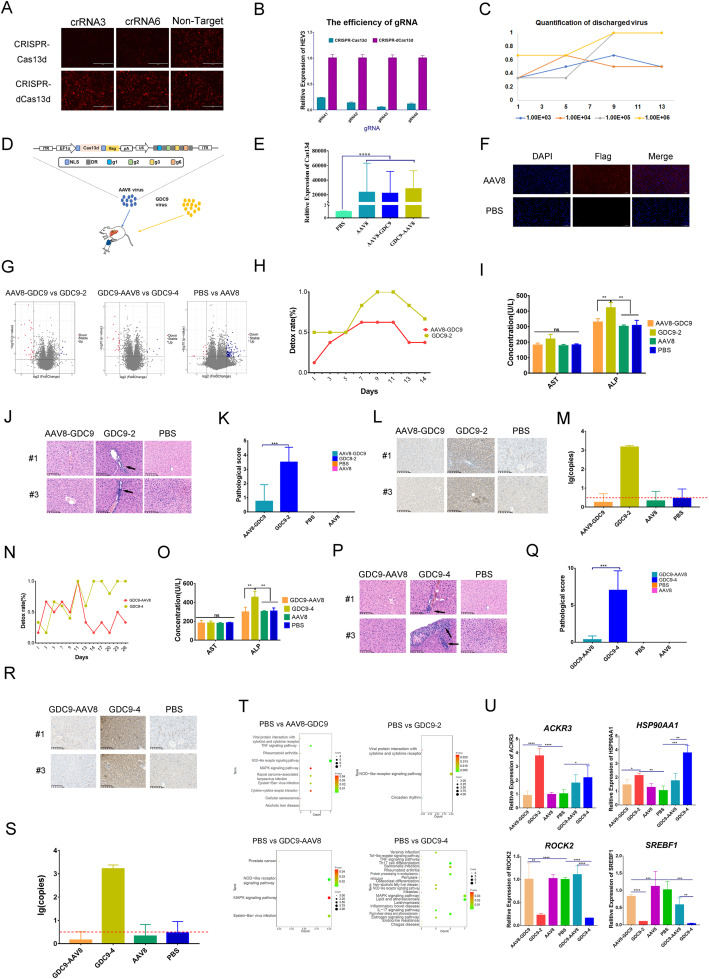
Prevention and treatment of gerbil hepatitis E using the programmable CRISPR-Cas13d system


In recent years, the global incidence of hepatitis E virus (HEV) has been rising, leading to increased morbidity and mortality associated with hepatitis. Cas13, a CRISPR effector, shows promise as an antiviral agent against single-stranded RNA viruses. Cas13d, a type VI-D effector, exhibits higher efficiency in suppressing RNA viruses compared to other type VI variants. However, its in vivo activity against RNA viruses in mammals remains unknown. This study aimed to evaluate Cas13d′s effectiveness against HEV. By comparing HEV3 genotypes, we designed eight crRNAs targeting conserved regions, achieving a maximum interference efficiency of 94.82% using HEK293T cells. To enable in vivo targeting of HEV by Cas13d, we engineered synthetic AAV8 vectors for Cas13d delivery, along with efficient crRNAs. In gerbils, intraperitoneal injection of Cas13d and HEV3-targeting crRNAs packaged in AAV8 resulted in a 50% reduction in the detoxification rate and significantly suppressed incidence. Our study establishes an effective platform for preventing and treating HEV infection in gerbils, demonstrating the potential of CRISPR/Cas13d as an RNA-guided therapy against mammalian viruses beyond HEV.
